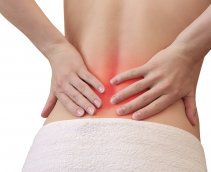The face of athletic injury assessment must change to include a comprehensive screening for myofascial trigger points. In sports, trigger points are commonly caused by the improper application of biomechanical and neuromuscular principles to skills and techniques. The repetitive and unmonitored use of such sports techniques results in poor performance and myofascial injury. Such performance barriers and injuries need not be mysterious in either their etiology or management. The technology exists ferret out a logical explanation for poor performance among athletes, their "overuse" injuries and proper management.
Neuromuscular principles to keep in mind when analyzing and designing a sports technique consist of respecting the inborn spinal cord reflexes and the length-tension relationship of muscle. Respect for these neuromuscular laws add grace, fluidity and power to sports movements. In effect, such movements are healthy and contribute to reducing the risk of sports injury.
Sound neuromuscular sports techniques require that the myotatic reflex be efficiently used. Most sports techniques can be broken down into several phases or steps. Typically, these are prepatory, execution and recovery phases. The preparatory phase of sports techniques prepares the muscles for forceful contraction. In the instance of the batter swinging the bat, the forward stride and hip rotation prepare the latissimus dorsi for forceful contraction. This is done by quickly stretching the latissimus dorsi and activating its myotatic reflex. The muscle contracts forcefully and fluidly (Dare I say, the way nature intended?). It is important to point out that it is the rate (quality) of the stretch and not the length (quantity) of stretch that's significant.
The other spinal cord reflex that needs to be respected is the crossed extensor reflex. This reflex facilitates one limb to retract reflexively or flex as its counterpart is extended. This reflex is essentially the same as the walking or crawling reflex and it adds grace and power to athletic movements. The crossed extensor reflex is at work throughout the performance of a skill from preparation to recovery.






